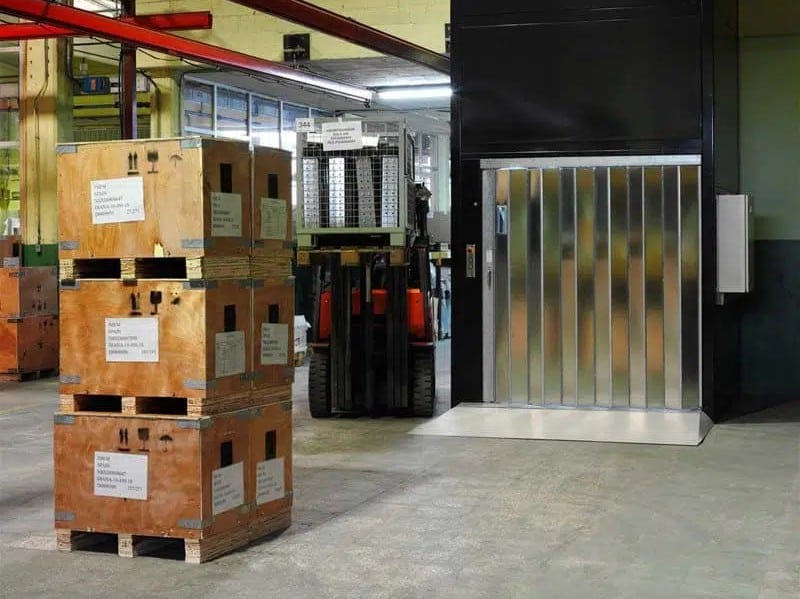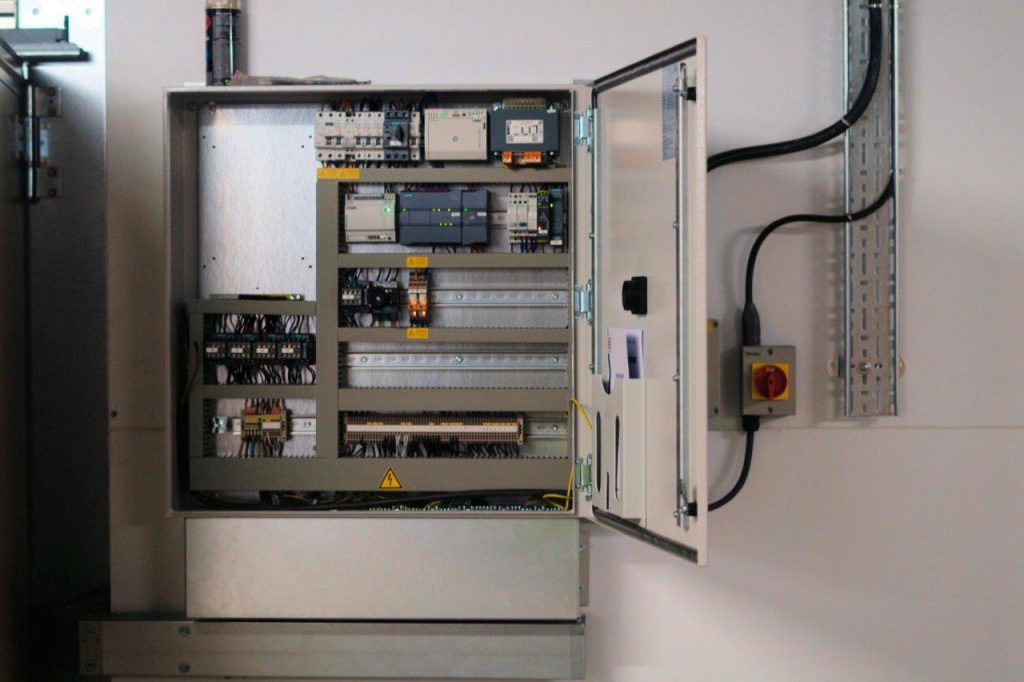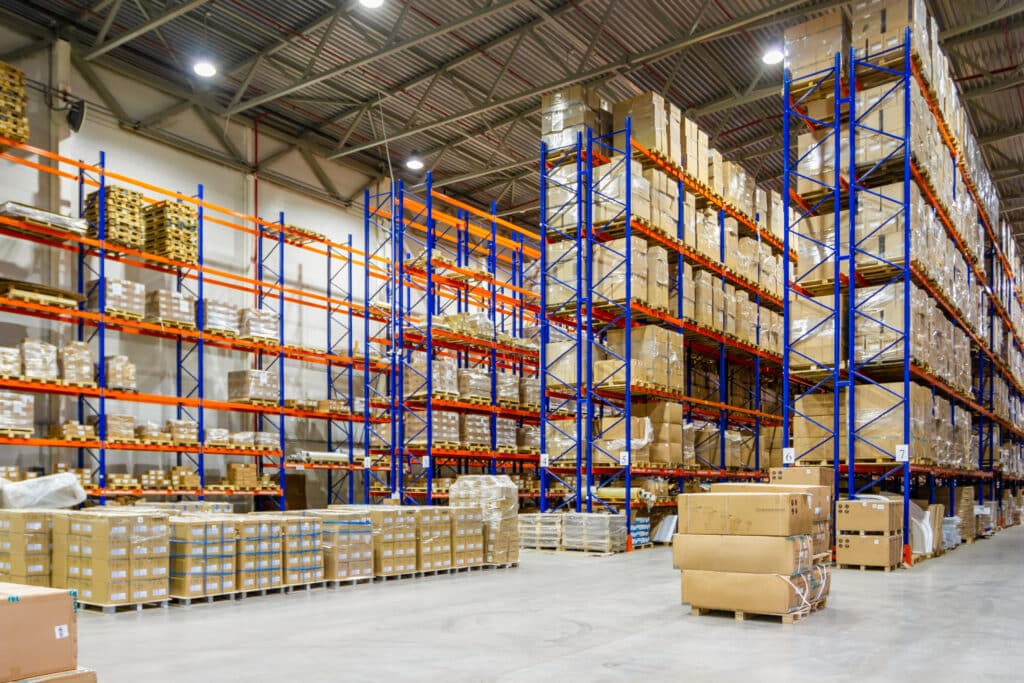What Is a Goods Lift?

A goods lift, also known as a goods elevator or cargo lift, is a mechanical system designed to transport stock, materials, or equipment between floors in a safe and efficient manner. Found in warehouses, factories, retail spaces, and hospitality venues, these lifts help businesses streamline operations, reduce manual handling risks, and increase productivity.
Most goods lifts are not designed for human transport. However, all models in our range include safety features such as enclosed cabins and emergency stop systems, allowing for goods and passenger use when required.
In this guide, we’ll explore how goods lifts work, the different types available, and key considerations when choosing the right lift for your business.
Types of Goods Lifts
vailable in the Gartec range, each suited to different environments and loads:
- Goods and Service Lifts: These lifts allow staff to assist with loading/unloading, ideal for stockrooms and back-of-house operations.
- Heavy-Duty Goods Lifts: High-capacity lifts capable of handling large, bulky, or industrial loads up to several tonnes.
- Good Passenger Platform Lifts: A hybrid lift that allows both goods and personnel to be transported safely, often used in hotels, hospitals, and large retail spaces.
Other types of goods lifts – not currently included in our range – include pallet lifts, used in warehouses and distribution centres and built to accommodate palletised goods and heavy stock; dumbwaiters, used to transport lightweight items like food, paperwork, or laundry in offices and hotels; and scissor lifts, a type of platform lift that raises goods vertically, often used in manufacturing or loading bays.
How Does a Goods Lift Work?
Most Gartec goods lifts use screw and nut drive technology – a clean, reliable, and efficient mechanical system that eliminates the need for hydraulics. A threaded screw runs vertically behind the lift platform. The motor then drives a large nut along this screw, smoothly raising or lowering the platform. This type of drive offers consistent performance, lower maintenance, and avoids oil leaks or complex machinery.
Some models, like the GLE Rhino, use an efficient geared traction chain drive, offering robust lifting with minimal building requirements. Traction systems operate with a counterweight and motor to move the lift using a chain or cable, and are ideal for high loads in commercial settings.

Key Components of a Goods Lift
When choosing a goods lift, it’s essential to consider both practical features and safety mechanisms to ensure efficiency and compliance with workplace regulations. Here are some of the key aspects to look for:
Motor & Drive System
- For screw and nut lifts, a quiet electric motor powers vertical movement without hydraulic fluid.
- Alternatively, geared traction chain drives are durable and suited to warehouse conditions.
Control System
- Manages lift operation and ensures safety.
- Features include single-touch or constant-pressure controls, floor selection, and emergency override functions.
Safety Features
- Overload sensors prevent operation if weight limits are exceeded.
- Light curtains and emergency stop buttons ensure safe operation.
- Battery backup provides emergency lowering during power cuts.
- Interlocking doors prevent movement when doors are open.
- Bump rails protect the lift’s interior and cargo from accidental impact damage.
Door Configurations
- Hinged doors are standard for light-duty lifts.
- Concertina doors are ideal for tight areas and space-saving.
- Picket gates are common in industrial applications for easy access with forklifts.
- Fire-rated doors provide enhanced safety in fire-prone environments like kitchens, factories, and warehouses.
Loading Methods
- Flush-floor entry allows smooth movement of trolleys and pallet trucks.
- Ramps are ideal when a lift pit isn’t possible, ensuring easy wheeled access.
- Trolley-friendly designs ensure compatibility with logistics equipment.
Lift Shaft or Free-Standing Structure
- A modular self-supporting shaft simplifies installation and avoids heavy building work.
- Also ideal for retrofits or where structural impact must be minimal.
Screw & Nut vs Traction – Which Is Right?
Understanding these differences will help you select the best goods lift for your business’s needs, balancing cost, efficiency, and long-term performance.
Screw & Nut Drive (ILS 500 and ILS 1000 Platform Lifts)
- Excellent for internal environments, offering clean, low-maintenance operation.
- Ideal for lighter goods or combined passenger/goods use, up to 1000kg.
Traction Chain Drive (GLE Rhino Goods Lift)
Delivers powerful lifting without a separate machine room.
Designed for heavy-duty use (up to 2000kg) and industrial settings.

Where Are Goods Lifts Used?
Goods lifts are an essential part of logistics and operations in a wide range of industries, enabling the safe and efficient movement of stock, equipment, and materials. Below are some of the most common industries where goods lifts play a crucial role.
Warehouses & Distribution Centres
Used to move stock between floors in storage facilities. Helps in loading and unloading goods from trucks efficiently.
Retail & Supermarkets
Supports stockroom storage and replenishment, ensuring shelves are quickly restocked. Often installed in back-of-house areas to assist with goods transport.
Hotels & Restaurants
Dumbwaiters transport food, crockery, and cleaning supplies between kitchens, dining areas, and hotel floors. Reduces manual labour and ensures quick service.
Healthcare & Hospitals
Essential for moving medical supplies, linen, waste, and food between hospital floors. Helps maintain hygienic and efficient hospital operations.
Factories & Manufacturing
Used to transport raw materials, components, and finished products between production areas. Reduces strain on workers and speeds up assembly-line processes.
Garages & Car Workshops
Lifts heavy tyres, vehicle parts, and machinery between workshop levels. Improves efficiency in servicing and repairs.
Find the Right Goods Lift for Your Business
A goods lift is an essential tool for many businesses and industries. We offer a wide range of customisable goods lifts, designed for various applications – and our expert team can help you find the perfect model for your business requirements.
